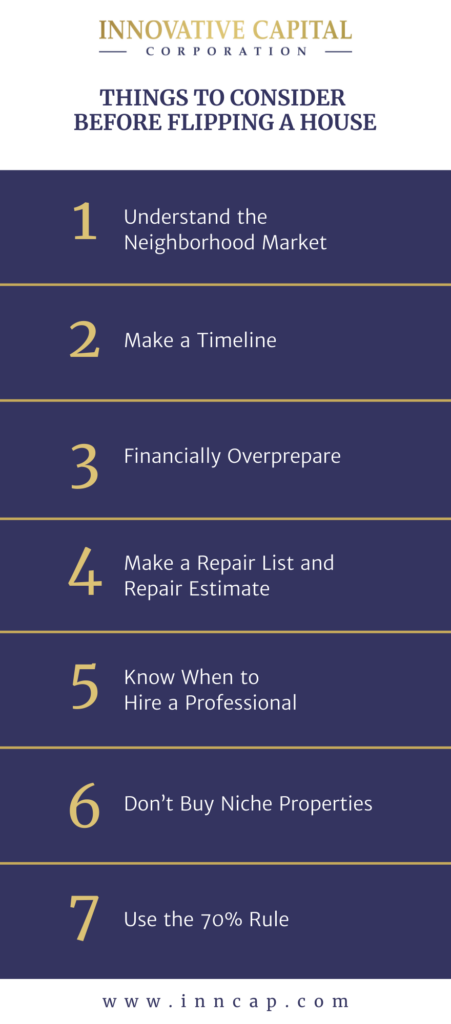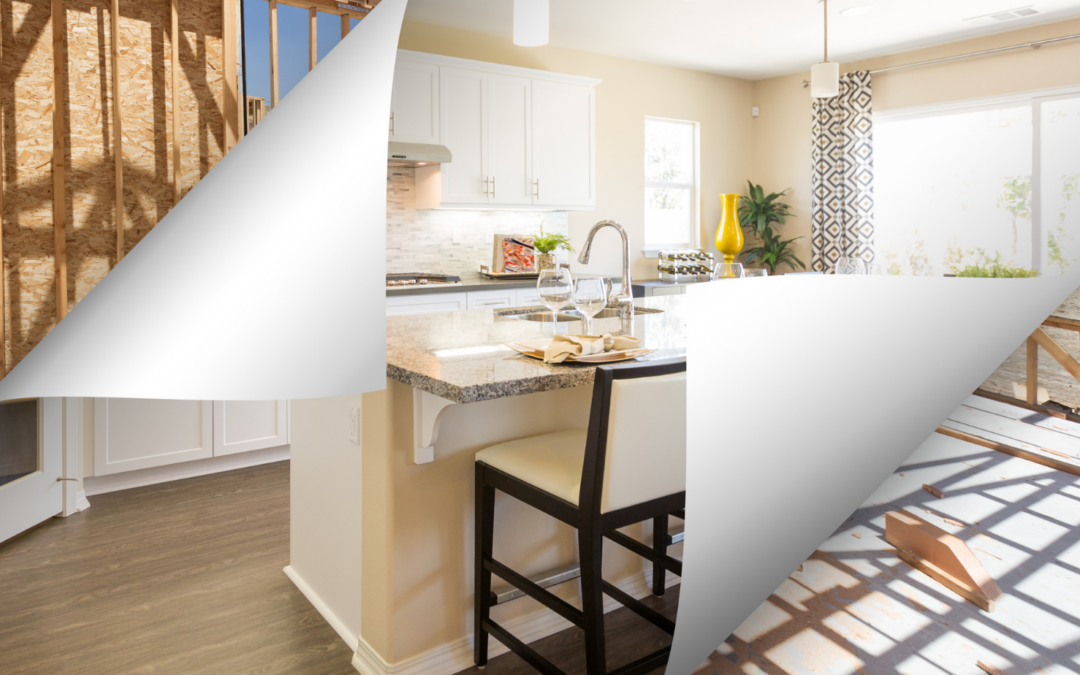Fix and flips have become a booming market for investors. Purchasing a property at a low rate, refurbishing the inside, and selling for a higher price is an appealing opportunity. Even Zillow tried to capitalize on flipping homes. Unfortunately, even their method backfired and caused the major corporation to offload over 7,000 homes.
While HGTV may romanticize flipping a home, remember that it takes research, funding, budgeting, and preparation to successfully fix and flip a home. In an effort to make the fix and flip process easier for you, we’ve put together a few things to consider before you get started.
Understand the Neighborhood Market
Research the neighborhood of the home you’re looking to fix and flip. This will give you a pulse of the market to see if other renovated properties sold quickly and for a similar price point. This research will help you gain insight into which homes are selling and why. Other things to consider about the property’s neighborhood are:
- School districts
- Construction
- Shopping centers
- General location
Assessing the neighborhood is the first step in your fix and flip journey. This can be the deciding factor between buying your property and getting started or moving into a different vicinity.
Make a Timeline
Set a goal for when you would like the fix and flip project to sell. Establishing a timeline helps you maximize profits. Typically, we see a goal of around $1,000 a day. A house that requires $30,000 in enhancements, would take around a month. One way to stay on track with this timeline is to set a penalty system with your contractors from the start.
In reality, the longer the house sits, the less you profit. Take into account that repairs in a fix and flip can take anywhere from three to six months. Potentially more with labor shortages and bottlenecks in the supply chain. This time, in addition to the time on the market, can push your deadline even further.
Financially Overprepare
A general budget helps you figure out how much to set aside for the property’s repair. When creating this budget, it’s not only important to calculate estimated costs, but it’s also important to add in a buffer for unexpected expenses. If you have ever experienced a remodel, you know that when repairing one thing, five more issues come to the surface.
Having expenses set aside for these unforeseen issues will set you up for success, and help you maximize profits on your fix and flip.
Make a Repair List and Repair Estimate
The property you choose largely affects the list of repairs that need to be finished prior to re-selling. We recommend making a list of repairs that are essential, for example, electric or plumbing issues, and focus less on cosmetic touches like paint color.
This isn’t to say curb appeal isn’t important. A few areas that may affect your buyer’s decision making include:
- A nicely paved driveway
- Clean windows
- Modern shutters
- Kept front yard
- No missing doorknobs or lightswitch covers
- No leaking faucets
Put your repair list in order from most important to least important, and budget the cost of each.
Know When to Hire a Professional
While DIY is a great and cheaper alternative, it may end up costing you more in the long run. When repairing a fix and flip project, sweat equity, the work you do yourself can help increase profits – if you’re handy. Projects you can tackle well, like painting walls, repairing small holes in drywall, etc., save labor costs.
However, sometimes hiring a professional is essential to saving both time and money. For example, plumbing and electrical repairs are better suited for people with licensed experience. It’s also important to hire a licensed professional for specific jobs, as inspectors may penalize investors who perform jobs that require a legal permit.
Don’t Buy Niche Properties
There is a time and a place for niche markets. Fix and flip homes typically do not fall into that category. Across the board, homes are easier to sell when they have broad appeal. This makes it easier to attract a wide range of potential buyers, quickly. The longer it takes to attract buyers, the more time it takes for investors to profit from the project.
A home in a suburban neighborhood with a reputable school district near major shopping centers, and city life will have a larger market than a home secluded in the forest with the nearest store being 45 minutes away. Yes, there are markets for both, but when it comes to fix and flips, time is of the essence. Use broad appeal to your advantage.
Use the 70% Rule
When looking to flip a property, it is important to understand what funds need to be allocated to initially purchase the property. Investors typically use a 70% rule to uncover the maximum buying price of the property.
This calculation is as follows:
After-repair value (ARV) X 70% – Estimated cost of repairs = Maximum buying price
However, use this at your discretion. There are, of course, other factors that play a role in deciding the price you should pay for your investment property.
Common Mistakes
Yes, mistakes happen. However, knowing the pitfalls many investors experience ahead of time can help to avoid making costly mistakes. Here are a few of the most common mistakes investors make in fix and slip properties:
- Not accruing enough finances to purchase or fund your project
- Not having enough time to complete renovations and inspections
- Trying to repair everything yourself
- Not researching the property enough
- Impatience
How To Finance Your Fix and Flip Project
There are multiple ways to finance your fix and flip property. The most common method for these projects is hard money loans. Why? Because they allow an investor to close a deal quickly and easily calculate the cost of capital for the project. In the world of real estate, finding quick funding to make the most competitive offer can be a time game. To help investors understand the best methods to finance their fix and flip projects, we created a guide to fix and flip loans.



